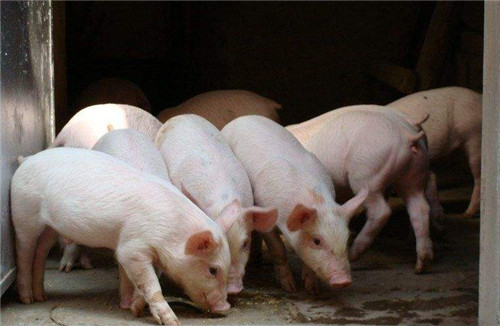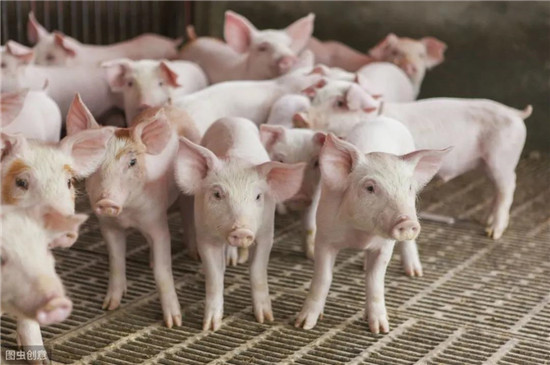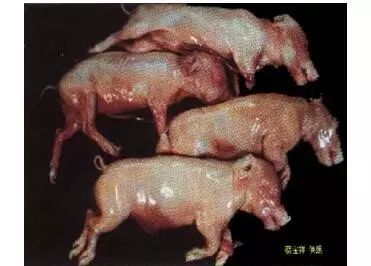Teach you to solve the problem of insufficient milk of sows in the delivery room!
Insufficient lactation in sows is usually characterized by growth retardation, diarrhea and high dysplasia and mortality. Some problems occur mainly in some parts of the world and may be caused by specific factors. It is pointed out that the main reason for the insufficient lactation of sows.
Calcium deficiency, in fact, mastitis, hysteritis and non-milk syndrome (MMA) are often associated with calcium deficiency in sows before and after delivery. Calcium deficiency is the result of excessive calcium nutrition during pregnancy, which can lead to impaired calcium metabolism in sows before and after delivery. It is usually associated with delayed delivery or breast enlargement in sows before and after delivery, and is often accompanied by vulvar secretions.
In most countries, the dietary calcium level of pregnant sows has been reduced to less than 7.0g/ kg, thus reducing the incidence of MMA. In some regions (such as the United Kingdom and Eastern Europe)
High calcium levels (> 8.0g / kg) usually occur in the diets of pregnant sows, so MMA problems are more common. In Germany, MMA is often found in the south, where drinking water often contains a lot of calcium. The amount of calcium and phosphorus in the diet must be optimized for each stage of the sow reproductive cycle. Better sanitary conditions, reasonable ventilation and almost no airflow can reduce the incidence of MMA, but there is still a threat of the disease because of the excessive supply of calcium during pregnancy.
Die prematurely. In some cases, the sows' breasts dry up and lactation stops 3 to 5 days after delivery. Perinatal non-milk syndrome (PHS) of sows can lead to weight loss and increased mortality of piglets, as well as increased need for foster care. Feeding large amounts of feed (> 44kg / day) in the third trimester of pregnancy to increase the birth weight of piglets-a common practice in the pig industry in Denmark-can lead to PHS. However, the disadvantage is to induce "diabetes" in pregnant sows. Other factors that may exacerbate PHS problems are low levels of crude fiber in the feed, which can lead to constipation, hardening of faeces, and overgrowth of E. coli and / or Clostridium in the intestines of sows. The endotoxin produced by these bacteria reduces the feed intake of sows, causing nausea and vomiting.

The toxin will remain in the pig, and the sow will dilute the toxin by keeping water. This will cause edema and disappear 2-3 days after delivery. At the same time, the amount of lactation will gradually decrease and eventually stop lactation. Then the piglets lose weight and may starve to death. Extreme physical condition in sows is also a risk factor for fatty liver syndrome and PHS. In order to avoid this situation, feed intake should increase gradually in the first 10 days of lactation. Experiments have shown that the feeding method of gradually increasing feed intake during lactation can reduce the incidence of PHS from 23% to 7% compared with free feeding. Improving feed intake during lactation is the key to prevent PHS, because there is a negative correlation between food intake during pregnancy and feed intake during lactation. This can be achieved by using a restricted feeding scheme during pregnancy and by measuring the backfat thickness regularly to ensure that sows do not store too much fat when they enter the delivery house.
The temperature and management of pig house, and the change of temperature in delivery house may lead to the reduction of breast milk intake of piglets. If the temperature around the sow is lower than that of the hotbed in the piglet nursery, the piglets will not want to stay around the sow and the feed. A new production system used in Denmark can encourage newborn piglets to stay in their nursery hotbeds, but the drawback is that the exit is too narrow for piglets to come to sows regularly. The breast is not fully stimulated, which will inhibit milk production. There is almost no problem of insufficient lactation in sows in the Netherlands, and this problem is usually associated with diseases such as influenza, porcine reproductive respiratory syndrome (PRRSV) and porcine circovirus type 2 (PCV2).
In some cases, piglet diarrhea in the Netherlands is caused by rotavirus, Escherichia coli or Clostridium infection. Lack of vitality at birth will lead to insufficient intake of colostrum and normal milk. This will also lead to a decrease in the lactation of sows, resulting in the starvation of piglets. For sows fed on wet feed, the amount of drinking water is related to food intake. Reducing the amount of sows fed before and after delivery will also reduce the amount of water they drink, because these sows are not used to drinking water from nipple drinking fountains. The nozzle drinking fountain at the bottom of the feed trough can also lead to insufficient drinking water for sows. The solution includes placing a separate drinking basin at the bottom of the feed tank or installing a bite drinking fountain at the top of the feed tank. Advanced wet feeding devices can provide more drinking water for sows before and after delivery.
Multifactor syndrome, pighouse condition, climate, stress, sanitary condition, infection pressure and drinking water play an important role in the lactation yield of sows and the production performance of subsequent piglets. Optimizing the nutrition of sows is the key to the prevention of multifactor syndrome. By improving feeding, optimizing the supply of calcium and phosphorus at all stages of the breeding cycle, using high-quality fermentable crude fiber in sows' diets, and ensuring a smooth transition to lactation feed for sows. (source: Yangxiang Scientific Pig raising Service)
Related
- On the eggshell is a badge full of pride. British Poultry Egg Market and Consumer observation
- British study: 72% of Britons are willing to buy native eggs raised by insects
- Guidelines for friendly egg production revised the increase of space in chicken sheds can not be forced to change feathers and lay eggs.
- Risk of delay in customs clearance Australia suspends lobster exports to China
- Pig semen-the Vector of virus Transmission (4)
- Pig semen-the Vector of virus Transmission (3)
- Five common causes of difficult control of classical swine fever in clinic and their countermeasures
- Foot-and-mouth disease is the most effective way to prevent it!
- PED is the number one killer of piglets and has to be guarded against in autumn and winter.
- What is "yellow fat pig"? Have you ever heard the pig collector talk about "yellow fat pig"?



